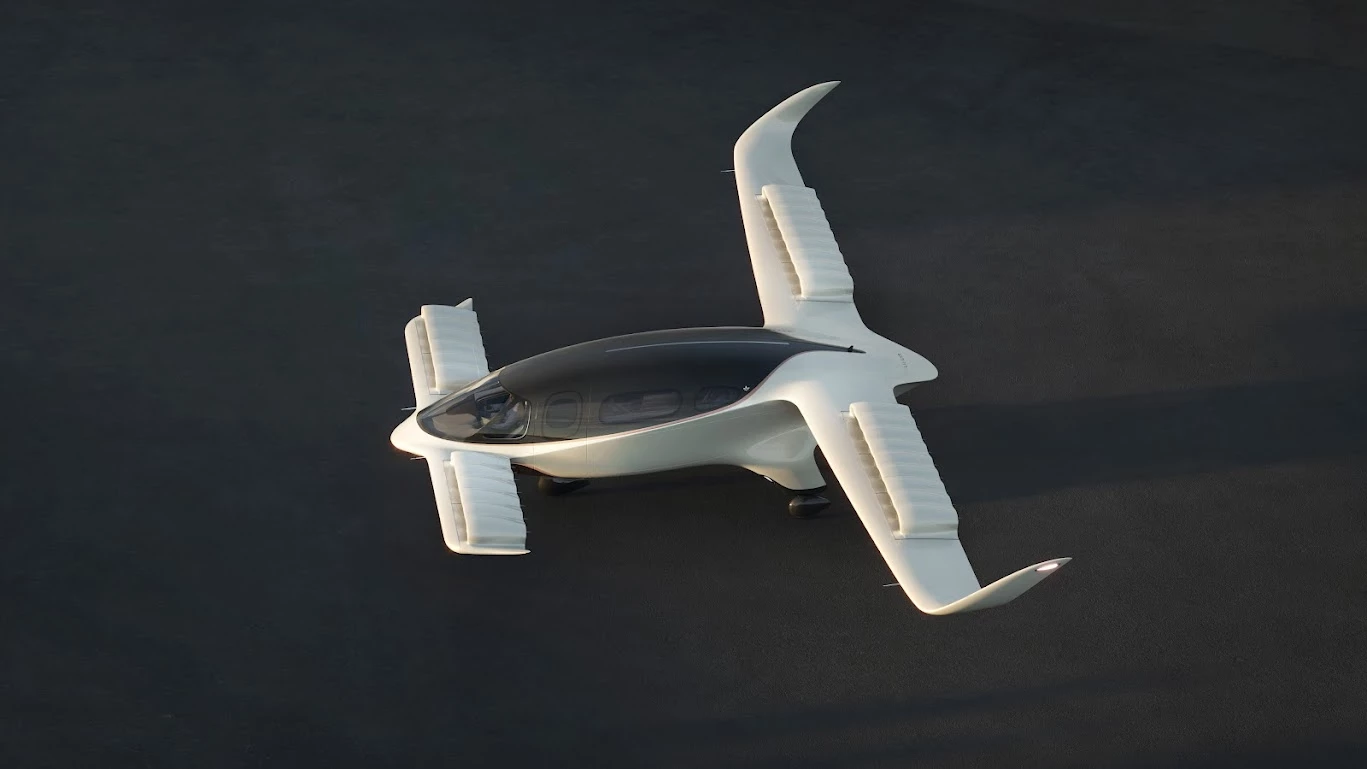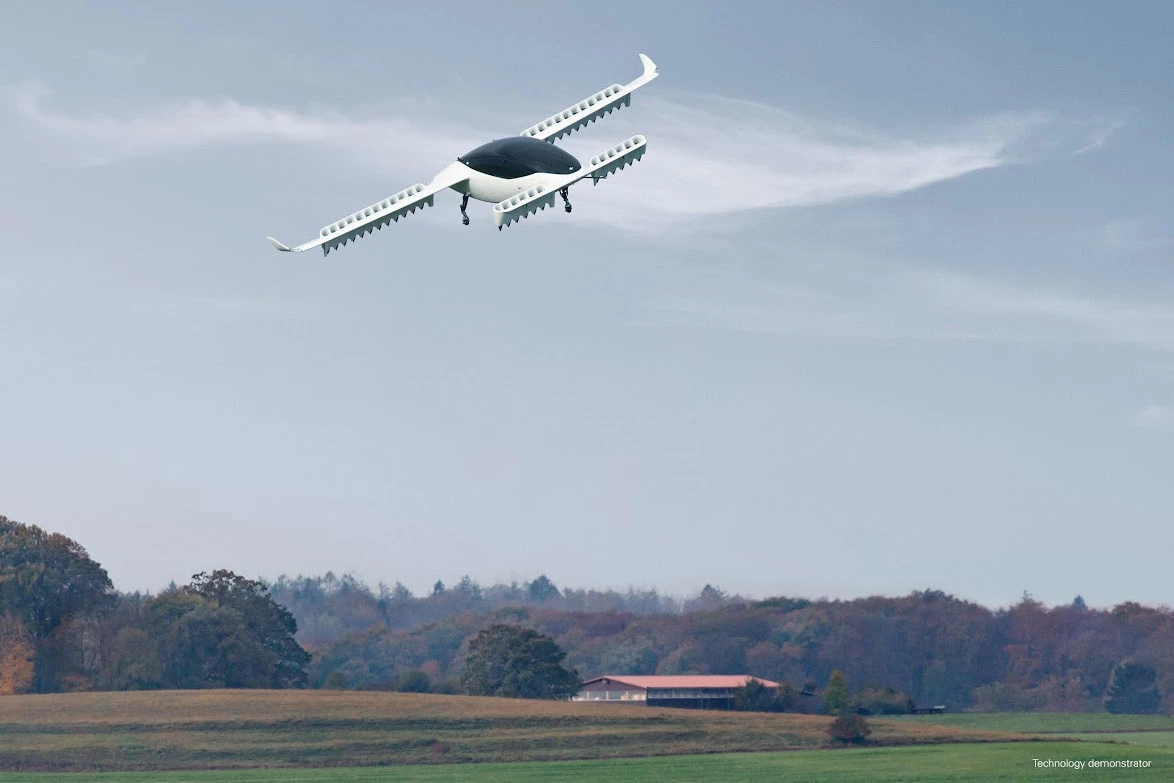Lilium is celebrating another eVTOL flight testing milestone, with video of its beautiful Phoenix 2 air taxi prototype achieving a full transition from vertical takeoff to wing-borne horizontal flight on both its main wings and canards.
This follows on from the team's first successful partial main wing transition back in June. The aerodynamics of transition flight are quite complex for new-fangled aircraft like these – the Lilium design uses large banks of electric ducted fans for both lift and cruise propulsion, gradually tilting them from a vertical orientation in hover mode, to a fully horizontal orientation in cruise flight.
In an aerodynamics sense, Lilium says a successful transition means that the airflow over the cover flaps of the propulsion banks goes from being turbulent and unattached to being smooth and attached to the surface, allowing it to generate wing lift. It happens at a certain combination of flap angle and airspeed, and you can see the effect visually in the video thanks to the grid of little "tufts" along the flaps. These little bits of yarn are flung about wildly in a turbulent airstream, but immediately lie flat in line with the airflow once it attaches to the propulsion banks.
You can see this effect across the entirety of Phoenix 2's main wing by about 25 seconds into the new flight test video above, with the propulsion system aimed more or less fully forward at an airspeed around 120 km/h (75 mph). At this speed, though, the propulsion banks on the smaller front canard wings are still angled downward, with turbulent airflow over them and a corresponding loss of efficiency. By the 1:28 mark, the aircraft has accelerated to about 180 km/h (112 mph), and the airflow over the canard bank is clearly smooth and attached, signifying a successful full transition.
As we've discussed before, Lilium's unusual approach of using lots of little electric fans instead of fewer larger ones means this machine uses maybe twice as much energy in a hover as some other designs, and the company is positioning them for longer-range regional flights where they'll spend a bigger proportion of their time in efficient wing-borne cruise mode than they would handling hover-heavy cross-town urban air taxi duties.
We have to commend Lilium here on releasing what looks like a full flight test video, complete with all camera audio and comms between the pilot and the flight test engineer, unsullied by pounding stock music. It might be a little less exciting to watch than the average promo video, but it gives a terrific insight into the sound profile of the Lilium jet design – one of its biggest selling points.

Far from the ear-splitting din of a helicopter taking off, Phoenix 2 makes a kind of white-noisy sound that really only seems to become unpleasant for maybe 10 seconds or so during takeoff and landing with the camera close to the pad. That, along with Joby's audio measurements taken in partnership with NASA, bodes well for these machines in an urban setting.
But there's a way to go yet. Lilium has extended its timeline for type certification with the FAA and EASA, with its first conforming prototypes due in 2023, ready for a 15-18-month final test campaign aimed at having the machine fully certified and ready for mass production by 2025.
Source: Lilium





